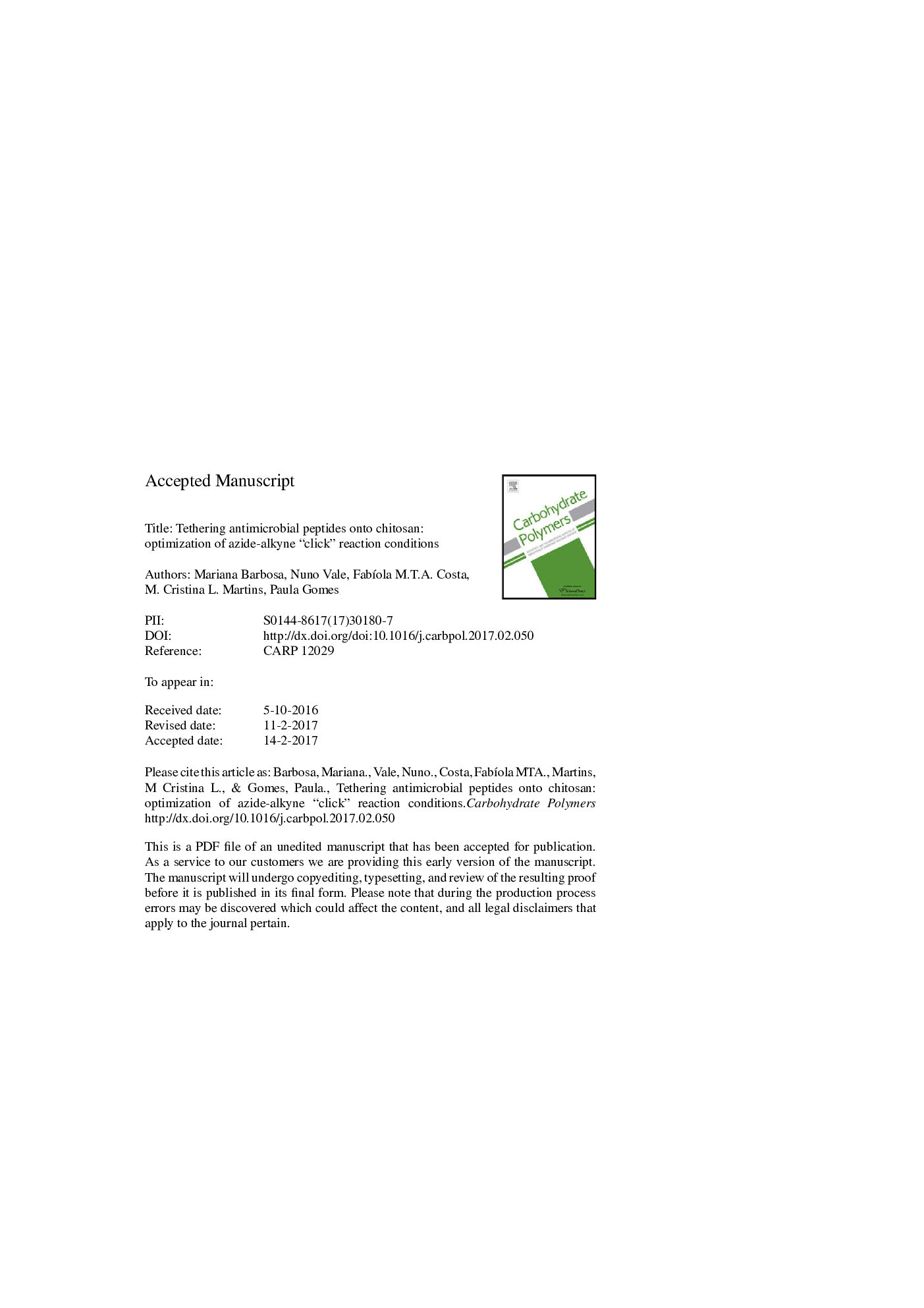| Article ID | Journal | Published Year | Pages | File Type |
|---|---|---|---|---|
| 5156972 | Carbohydrate Polymers | 2017 | 27 Pages |
Abstract
Antimicrobial peptides (AMP) are promising alternatives to classical antibiotics, due to their high specificity and potency at low concentrations, and low propensity to elicit pathogen resistance. Immobilization of AMP onto biomaterials is an emergent field of research, towards creation of novel antimicrobial materials able to avoid formation of biofilms on the surfaces of medical devices. Herein, we report the chemical route towards one such material, where chitosan was used as biocompatible carrier for the covalent grafting of Dhvar-5, a well-known potent AMP, via the chemoselective (“click”) Cu(I)-catalyzed azide-alkyne cycloaddition (CuAAC). The material's structure, as well as peptide loading, were confirmed by Fourier-transformed infra-red (FT-IR) and X-ray photoelectron (XPS) spectroscopies, and by Amino Acid Analysis (AAA), respectively. Results herein reported demonstrate that, with proper optimization, the “click” CuAAC is an attractive approach for the tethering of AMP onto chitosan, in order to create novel antimicrobial materials potentially valuable for biomedical applications.
Related Topics
Physical Sciences and Engineering
Chemistry
Organic Chemistry
Authors
Mariana Barbosa, Nuno Vale, FabÃola M.T.A. Costa, M. Cristina L. Martins, Paula Gomes,
